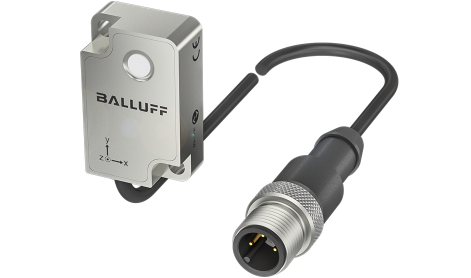In industrial production, motors, centrifugal pumps and general-purpose equipment all belong to a very important class of power supply and transmission equipment. The industrial motor is the source of power in the industrial industry. It converts electrical energy into mechanical energy for all equipment loads. The centrifugal pump is a machine that either carries or pressurizes the fluid. In the chemical, pharmaceutical, food and beverage industry the centrifugal pump is mainly used to transport water, oil, acid, alkali, emulsions, and liquid metal. There is an extremely wide range of applications.
Failure of this kind of equipment will directly cause losses to the production process, or even lead to dangerous accidents. Therefore, it is the responsibility of the plant's power equipment department to ensure the healthy operation of the equipment through proper maintenance.
Predictive maintenance and condition monitoring
Up until now, most of the fault repairs for motor and pump equipment are only initiated after the problems occurred. The reason being that only planned patrol inspections and regular maintenance methods were employed. Unfortunately, the former cannot reduce or avoid the occurrence of equipment failure, while the latter deals with problems such as insufficient or excessive maintenance.
In addition, the daily maintenance work relies heavily on people's sense of responsibility and experience. For example, every time personnel is replaced, the pressure on the management and operation of the equipment increases. Generally speaking, it is difficult to pass the extensive on site maintenance experience on to newcomers.
With the development of machine manufacturing, automatic control, reliable engineering and intelligent management, the concept of predictive maintenance stands out the most. Predictive maintenance is based on sensor detection and data analysis technology. It periodically or continuously monitors the information of physical and chemical parameters such as energy, heat, wear and tear, vibration, etc. while the machinery is operating. It is based on machine learning algorithms and models. Predictive maintenance analyzes and evaluates the condition of the equipment in order to predict the time of the next failure and when you should perform maintenance.
Standard ISO 10816-3
The international standards for mechanical vibration is ISO-10816 (Mechanical Vibration—Evaluation of Machine Vibration by Measurement on Non-Rotating Parts). The current International Organization for Standardization is an upgraded version of the previous ISO 2372 standard. The upgrade mainly revolves around the criteria for vibration speed. More detailed regulations have added new criteria for evaluating the condition of equipment using vibration displacement, which was issued in 2001 as the Chinese national standard GB-T 6075.
ISO 10816-3 belongs to the third part of this standard, namely "Industrial Machines with Power above 15KW and Rotation Speed between 120RPM and 5000RPM-1998". This section describes the applicable machine category, reference standards, measurement process, operating conditions, machine class, and evaluation requirements.
In particular, in the sections on measurement process and applicable conditions, the standard addresses measurement equipment, measurement position, continuous and discontinuous monitoring, respectively. It also explains the operating conditions. For example, for monitoring equipment such as vibration condition monitoring sensors, a wide frequency response range of 10Hz-1KHz is explicitly required.
The standard also goes into detail about the ability to measure vibration in the frequency band. Depending on the evaluation rule, it may be required to measure either displacement or velocity (or both). For velocities close to or less than 600 rmin, the lower frequency response limit of the instrument should start from 2 Hz. At the same time, we must also consider that the measurement system is not affected by environmental factors such as temperature, acoustic field, sensor cable length, magnetic field, power variations, sensor orientation, etc.

The BCM series of multi-functional condition monitoring sensors from BALLUFF meets or even exceeds the international standard ISO 10816-3. For example, the vibration frequency can be monitored from 2 to 3200Hz, the vibration speed of the equipment can be measured from 0 to 220mm/s and the acceleration from 0 to 16g. The stainless-steel housing provides a protection class of at least IP67.
With Balluff's BCM sensor solution, which is based on the ISO 10816-3 standard, the predictive maintenance of important plant assets such as motors and centrifugal pumps can now be simplified and made easily accessible.
























